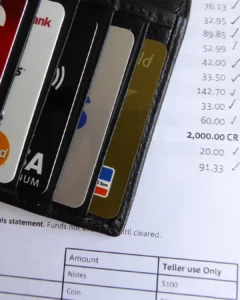Introduction
If you’ve ever applied for a loan, credit card, or even rented an apartment, you’ve probably heard terms like “FICO Score” and “Credit Score.” But what do these numbers actually mean? Are they the same thing? More importantly, how does having a higher credit score benefit you, and what can you do to improve it quickly?
A good credit score can unlock better financial opportunities, lower interest rates, and even job prospects. This article breaks down the difference between a FICO Score and a general credit score, explains why a higher score is beneficial, and provides actionable steps to improve your score in just 60 days.
What’s the Difference Between a FICO Score and a Credit Score?
Many people assume that “credit score” and “FICO score” are interchangeable terms. While they are closely related, there are key distinctions.
1. What Is a Credit Score?
A credit score is a broad term used to describe a numerical rating that reflects your creditworthiness. Lenders use this score to assess the risk of lending to you.
Several companies generate credit scores, including:
- FICO (Fair Isaac Corporation) – the most widely used scoring model.
- VantageScore – created by the three major credit bureaus (Experian, Equifax, and TransUnion).
- Other proprietary scoring models – banks and lenders may develop their own scores.
2. What Is a FICO Score?
A FICO Score is a specific type of credit score developed by the Fair Isaac Corporation. It is the most widely recognized and used by 90% of top lenders when evaluating loan applications.
FICO scores range from 300 to 850, and they are calculated based on five key factors:
- Payment history (35%) – Whether you pay your bills on time.
- Amounts owed (30%) – Your credit utilization ratio.
- Length of credit history (15%) – How long you’ve had credit accounts.
- Credit mix (10%) – The variety of credit accounts you have (loans, credit cards, etc.).
- New credit (10%) – How many new accounts you’ve opened recently.
Why Having a Higher Credit Score Matters
A high credit score opens doors to financial advantages, including:
1. Lower Interest Rates on Loans & Credit Cards
Lenders offer better interest rates to borrowers with high credit scores, potentially saving you thousands of dollars over time.
2. Easier Loan & Credit Card Approvals
A high credit score increases your chances of getting approved for mortgages, auto loans, personal loans, and premium credit cards.
3. Better Housing & Job Opportunities
Landlords check credit scores before approving rental applications. Some employers also conduct credit checks for job applicants, particularly in finance-related positions.
4. Higher Credit Limits
Banks and credit card companies reward responsible borrowers with higher spending limits, giving you more financial flexibility.
5. Lower Insurance Premiums
Many insurance companies use credit scores to determine auto and homeowner’s insurance rates. A higher score can lead to lower premiums.
How to Improve Your Credit Score in 60 Days
If your credit score isn’t where you want it to be, don’t worry! Here are actionable steps to see improvement within two months:
1. Pay Bills on Time (or Early!)
Since payment history accounts for 35% of your FICO score, ensuring you pay all bills on time is the single most effective way to boost your score quickly.
Pro Tip: Set up automatic payments or reminders to avoid missing due dates.
2. Lower Your Credit Utilization Ratio
Your credit utilization ratio is the percentage of your available credit that you’re using. Keep it below 30%, and for the fastest improvements, aim for under 10%.
Actionable Step:
- Pay off as much of your balance as possible.
- Request a credit limit increase (but don’t increase spending).
3. Dispute Any Errors on Your Credit Report
Mistakes on your credit report can drag down your score. Request free copies of your report from AnnualCreditReport.com, and dispute any inaccuracies.
Common errors include:
- Incorrect account balances
- Fraudulent accounts
- Outdated negative information
4. Become an Authorized User on a Trusted Person’s Credit Card
If a family member or friend with good credit adds you as an authorized user on their credit card, their positive payment history can help improve your score almost instantly.
5. Avoid Applying for New Credit Cards or Loans
Each new application results in a hard inquiry, which can lower your score temporarily. Unless absolutely necessary, avoid applying for new credit within this 60-day window.
6. Pay Off Debt Strategically
Focusing on paying down high-interest revolving debt (like credit cards) can have an immediate impact.
Strategy:
- Use the Avalanche Method (paying off high-interest debt first) for savings.
- Or the Snowball Method (paying off small balances first) for motivation.
7. Keep Old Accounts Open
Even if you don’t use an old credit card, keeping it open helps maintain a longer credit history, which improves your score over time.
Final Thoughts: Take Control of Your Credit Today
Your credit score isn’t just a number—it’s a powerful financial tool that affects your ability to borrow, secure housing, and even land a job. While there are different types of credit scores, FICO remains the most widely used by lenders.
By following these simple strategies, you can see improvements in your credit score within 60 days. Start today by checking your credit report, making timely payments, and reducing your credit utilization. Small, consistent actions lead to big financial wins in the long run.
Ready to take control of your credit? Begin implementing these steps today and watch your score rise!
Have questions or success stories about improving your credit? Share them in the comments below!

